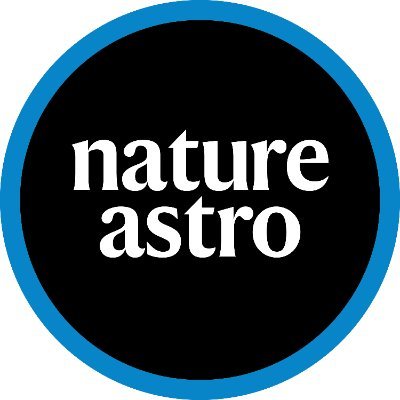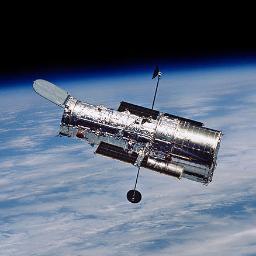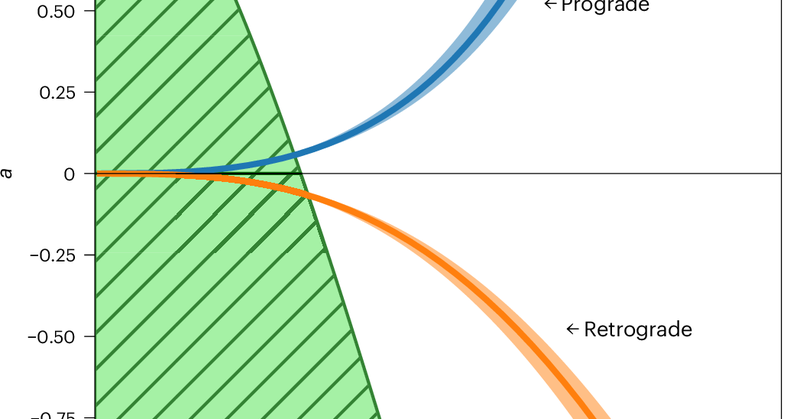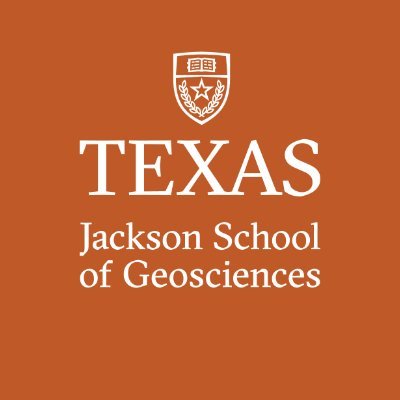
Nature Astronomy
@NatureAstronomy
Followers
43K
Following
6K
Media
2K
Statuses
7K
A Nature journal dedicated to presenting the very best research across the disciplines of astronomy, astrophysics, cosmology and planetary science.📡
London, England
Joined October 2015
A computational model of the early-to-present-day Universe predicts that some of the first stars formed in structures that challenge conventional classification. https://t.co/NxeOUPu60R
nature.com
Nature - A computational model of the early-to-present-day Universe predicts that some of the first stars formed in structures that challenge conventional classification.
3
16
60
Hubble spotted an unusual star 128 light-years away. With its unique ultraviolet capabilities, Hubble determined this star is a rare ultramassive white dwarf, made up of merged stars: https://t.co/2Hp1LBjUBC Find out more about this star's intriguing atmosphere in this video ⬇️
38
238
1K
Seth Klarman avoids the spotlight—but his funding helps shape the Left’s policy machine.
3
3
19
An international team of astronomers have discovered a remarkably clumpy rotating #galaxy that existed just 900 million years after the Big Bang, shedding new light on how galaxies grew and evolved in the early Universe: https://t.co/3CKloscEhY
@DurhamPhysics @NatureAstronomy
4
7
20
The Thirty Meter Telescope, long slated for construction in Hawaii, might be getting a new home https://t.co/9PAhmuMoNV
4
27
80
The Milky Way is moving through the Universe and its path is influenced by the combined gravitational pulls of nearby galaxies, such as Andromeda, the Triangulum galaxy and the Large Magellanic Cloud. @NatureAstronomy @NaturePortfolio
1
13
40
Celebrate the materials that build America. Join us this ROCKtober 2025!
4
11
88
The #RubinFirstLook images are out...
Introducing...your sneak peek at the cosmos captured by @NSF–@doescience Vera C. Rubin Observatory! Can you guess what regions of sky they are? This is just a peek...join us at 11am US EDT for your full First Look at how Rubin will #CaptureTheCosmos! https://t.co/1a74X2edp8
0
22
55
Our June(teenth) issue is now here to read: https://t.co/YE9Q1fFjgc The cover image depicts a ticking time bomb... a supernova progenitor on our doorstep! But don't worry, we still have a good 20 billion years until it goes bang.
0
9
41
Gessey-Jones et al. show that future radio telescopes will be able to reveal the mass distribution of the first stars in the Universe by detecting their impact on a faint radio signal of hydrogen atoms from Cosmic Dawn. https://t.co/qRgvCGCE34
@cambridge_astro
0
6
17
The precessing jet in M87, exhibiting an unexpectedly broader width in the inner region, is found to be linked to a compact, tilted accretion disk, providing new insights into the jet-disk-BH configuration and formation. Cui & Lin:
nature.com
Nature Astronomy - M87’s jet is precessing with a relatively short 11-year period and seems to be curved in the vicinity of the black hole, rather than being strictly collimated. This...
0
4
12
Honestly they could have saved some space and just put “The entire Fairfax Uniparty vs. Libertarian Dave Crance” But still a great read - thanks @CardinalNewsVA for constantly giving all candidates, even third party a voice!
3
4
14
The Fermi-LAT collaboration reports a significant γ-ray detection (5.2σ) from the coronae of radio-quiet AGNs, revealing compact (∼10 gravitational radii) and extended (∼2.7×10⁶ gravitational radii) coronal regions, challenging existing models.
nature.com
Nature Astronomy - The Fermi-LAT Collaboration reports a significant γ-ray detection (5.2σ) from the coronae of radio-quiet active galactic nuclei, revealing compact (~10 gravitational...
0
3
10
In a new study in @NatureAstronomy, scientists from the Jackson School took a close at Mars' thick clay terrains. They found that these areas could have provided the right mix of water, minerals and a calm environment for life to develop. Read more: https://t.co/TJ5O72922v
1
6
12
The Martian terrain has influenced its early surface evolution, allowing regions of stable chemical weathering to develop and permanently trap water and minerals, weakening Mars’ climate feedback and limiting long-term hydrological activity. Moore et al.:
nature.com
Nature Astronomy - New findings reveal how terrain influenced Mars’s early surface evolution, allowing regions of stable chemical weathering to develop and permanently trap water and...
0
10
20
Using a large cosmological sample of fast radio bursts, Connor et al. have measured the Universe’s missing baryons, finding that most reside in the diffuse intergalactic medium, not galaxies — confirming strong astrophysical feedback seen in simulations.
nature.com
Nature Astronomy - Using a large cosmological sample of FRBs, Connor et al. have located many of the Universe’s unseen baryons, finding that most reside in the diffuse intergalactic medium,...
0
14
37
Simulations of long-term atmospheric evolution show that rocky planets with Earth-like masses in the classical Habitable Zone of Sun-like stars can retain thick He-dominated primordial atmospheres. Lammer, Scherf et al.:
nature.com
Nature Astronomy - Simulations of long-term atmospheric evolution show that rocky planets with Earth-like masses in the classical habitable zone of Sun-like stars can retain thick He-dominated...
0
13
50
A paper in @NatureAstronomy presents an optic system that produces high-resolution observations of fine structures in the Sun’s corona by lifting the veil of atmospheric blur over a fast-moving, twisted plasma stream as it becomes unstable. https://t.co/77ziSkfwKi
0
11
15
Multi-instrumental data analysis reveals a giant exoplanet in orbit around the 0.2 M_sol star TOI-6894. This system poses strong challenges to planet formation theories and is an excellent target for atmospheric characterisation. Bryant et al.:
0
8
24
Polymarket is coming back to the US. 🇺🇸 Get on the waiting list to get early access to Polymarket's fully regulated U.S. trading platform:
0
13
123
A 10 M⨁ planet is detected in the habitable zone (HZ) of the solar-type star Kepler-725 using the transit timing variations technique. This study proposes a complementary pathway to probe low-mass exoplanets in the HZs of Sun-like stars. Sun et al.:
nature.com
Nature Astronomy - A 10-Earth-mass planet is detected in the habitable zone of the solar-type star Kepler-725 using the transit timing variation technique. This study proposes a complementary...
0
24
68
The likelihood of a collision between the Milky Way and its neighbouring galaxy Andromeda may be smaller than previously thought, according to a new simulation described in @NatureAstronomy. https://t.co/Vvz7lImmw4
0
23
43
. @Hubble_space and @ESAGaia join forces to revisit the fate of our galaxy. Doubt is cast on the long-held prediction that the Milky Way galaxy will collide with the Andromeda galaxy in about 4.5 billion years. Read more 👉 https://t.co/yjYiwDZExA
9
71
213




















